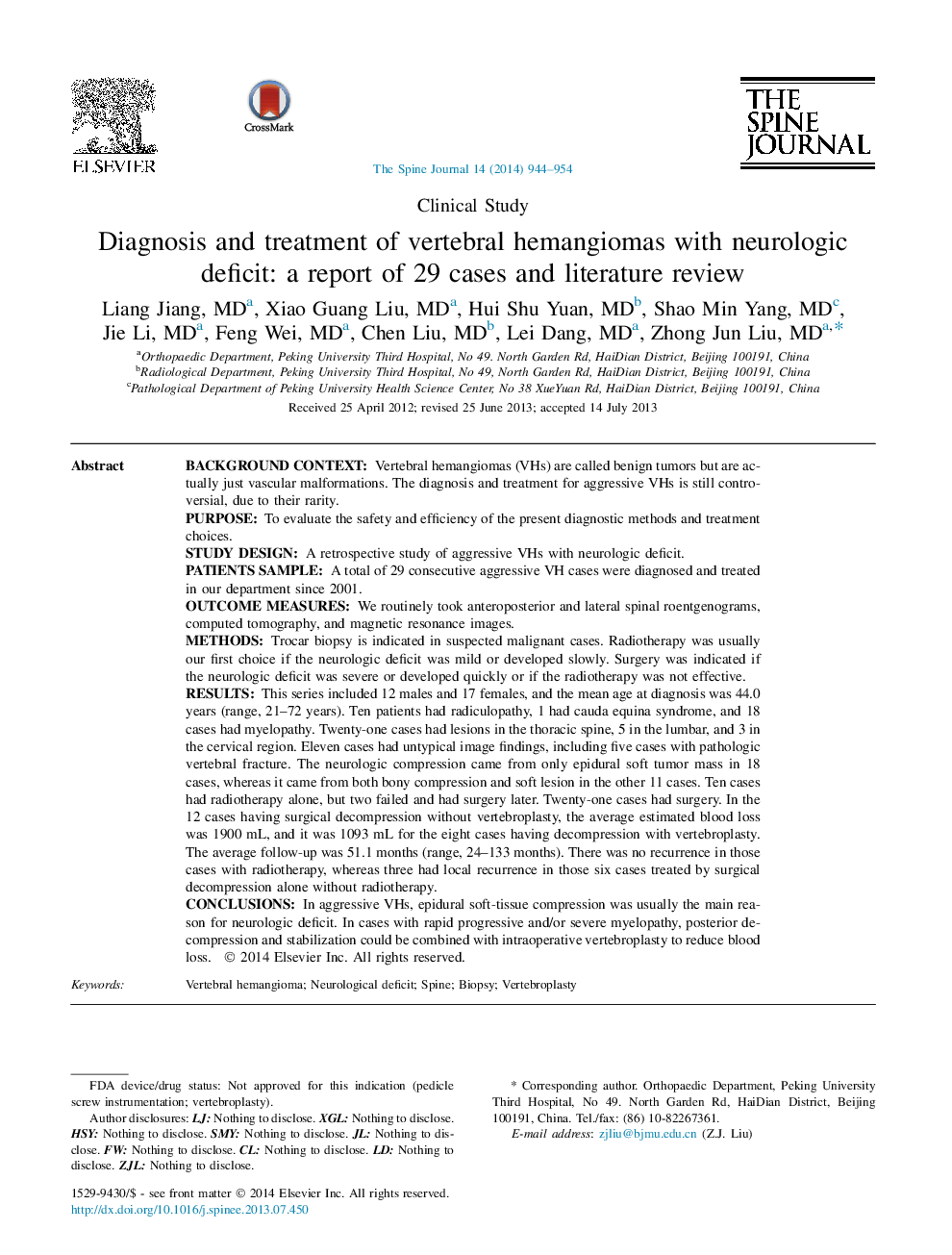| کد مقاله | کد نشریه | سال انتشار | مقاله انگلیسی | نسخه تمام متن |
|---|---|---|---|---|
| 4097770 | 1268598 | 2014 | 11 صفحه PDF | دانلود رایگان |
Background contextVertebral hemangiomas (VHs) are called benign tumors but are actually just vascular malformations. The diagnosis and treatment for aggressive VHs is still controversial, due to their rarity.PurposeTo evaluate the safety and efficiency of the present diagnostic methods and treatment choices.Study designA retrospective study of aggressive VHs with neurologic deficit.Patients sampleA total of 29 consecutive aggressive VH cases were diagnosed and treated in our department since 2001.Outcome measuresWe routinely took anteroposterior and lateral spinal roentgenograms, computed tomography, and magnetic resonance images.MethodsTrocar biopsy is indicated in suspected malignant cases. Radiotherapy was usually our first choice if the neurologic deficit was mild or developed slowly. Surgery was indicated if the neurologic deficit was severe or developed quickly or if the radiotherapy was not effective.ResultsThis series included 12 males and 17 females, and the mean age at diagnosis was 44.0 years (range, 21–72 years). Ten patients had radiculopathy, 1 had cauda equina syndrome, and 18 cases had myelopathy. Twenty-one cases had lesions in the thoracic spine, 5 in the lumbar, and 3 in the cervical region. Eleven cases had untypical image findings, including five cases with pathologic vertebral fracture. The neurologic compression came from only epidural soft tumor mass in 18 cases, whereas it came from both bony compression and soft lesion in the other 11 cases. Ten cases had radiotherapy alone, but two failed and had surgery later. Twenty-one cases had surgery. In the 12 cases having surgical decompression without vertebroplasty, the average estimated blood loss was 1900 mL, and it was 1093 mL for the eight cases having decompression with vertebroplasty. The average follow-up was 51.1 months (range, 24–133 months). There was no recurrence in those cases with radiotherapy, whereas three had local recurrence in those six cases treated by surgical decompression alone without radiotherapy.ConclusionsIn aggressive VHs, epidural soft-tissue compression was usually the main reason for neurologic deficit. In cases with rapid progressive and/or severe myelopathy, posterior decompression and stabilization could be combined with intraoperative vertebroplasty to reduce blood loss.
Journal: The Spine Journal - Volume 14, Issue 6, 1 June 2014, Pages 944–954
